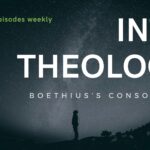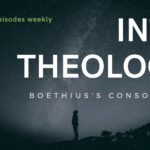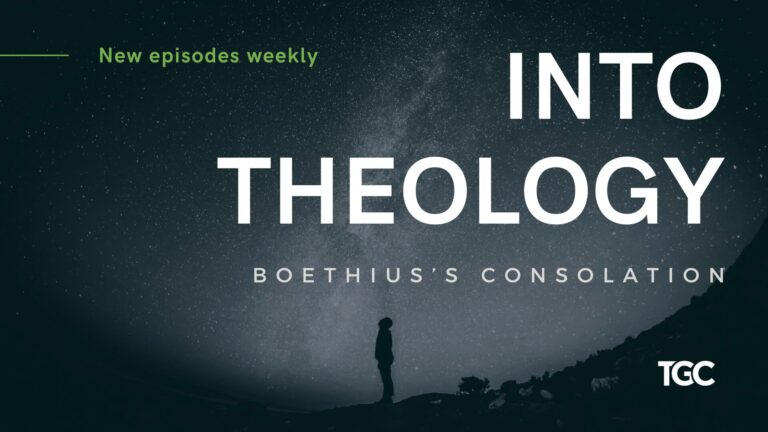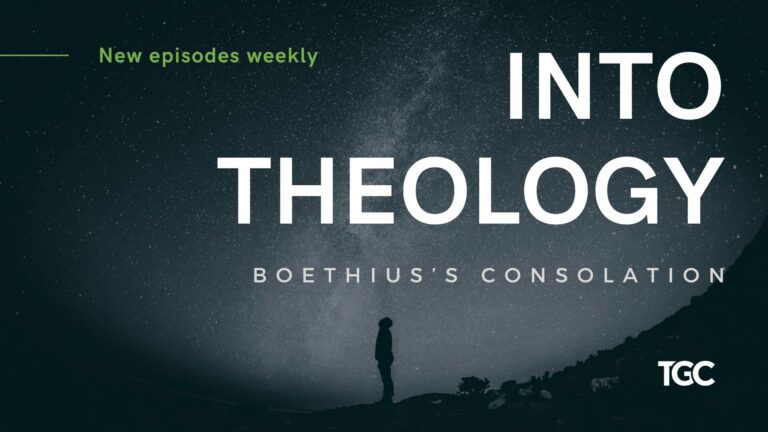William Blake / Public domain
When the Red Dragon learned of the Messiah’s birth, he sought to slay him. Through his proxy Herod, soldiers slew children in Bethlehem. Yet God would not let his holy one see corruption. He rescued him by sending an angel to warn Joseph, the earthly father of Jesus (Matt 2:13). Joseph took his family to Egypt to hide from the Dragon.
It was not until Jesus’s Baptism that the ancient Leviathan once again schemed to end the Messiah—this time by tempting him to sin. He tested Christ for forty days yet failed to entice the Saviour of all men. In the end, the Dragon raged against the Lamb. He saw the Roman cross and decided to nail the Son of Man to it.
Yet in so doing, the Dragon bit the hook. Instead of piercing the Son unto death, the hook pierced the ancient serpent. God, not the Dragon, sent the Lamb to the cross. The man, broken and bleeding, revealed heaven’s glory on the cross (John 12:23).
The Dragon Attacks
In the twelfth chapter of Revelation, John’s vision gives us heaven’s view of Satan’s rebellion. It portrays a woman, a child, and a dragon. The woman births the messiah, as the Great Red Dragon stands before her so that “he might devour” the child (Rev 12:4). He fails—whether through his proxy Herod, through tempting Jesus, or even through the Lamb’s death on the Roman cross.
Despite the Dragon’s rage against the Messiah, “her child was caught up to God and to his throne” (Rev 12:5). In summary fashion, John sees the Dragon’s schemes as failing, and the child ascending to the Father’s right hand “to rule all the nations with a rod of iron” (Rev 12:5).
The Son of Man Reigns
In fact, that is how the Book of Revelation opens. The Son of Man, glorified in heaven, visits the church on earth (Rev 1:12–17; 2–3; cf. Dan 7). In the Gospel Books, Jesus calls himself repeatedly the Son of Man. And he maintains that identity in the book of Revelation, which importantly defines his present heavenly role.
In Daniel 7, the Son of Man ascends to the Ancient of Days to receive the kingdom. Then he gives the kingdom to his people and seemingly judges on their behalf (Dan 7:18, 22, 26–27).
The Son of Man has done just that as he ascended into heaven after the resurrection. He arrived there to receive the kingdom. When Stephen was being stoned, he said, “Behold, I see the heavens opened, and the Son of Man standing at the right hand of God” (Acts 7:56).
And so Stephen entered into God’s presence. And so the Son of Man who is King over the lords of the earth (Rev 1:5) makes the church the kingdom of God (1:6) because they are in Christ (1:9); if the head is the king, the body enacts his rule. He reigns, and in him, so do we.
The Lamb Rules
And yet as the ascendant Son of Man, Jesus surprises us by showing himself to be a slain Lamb (Rev 5:6). He reigns precisely as the slain one—the Lamb of God. Christ our Passover Lamb is the Son of Man who reigns in the throne room with the Father.
In fact, “the Lamb” is “in the midst of the throne” of God (Rev 7:17). And there, the lamb ironically shepherds us as the king. Revelation wants to show us that Christ won the victory through dying as a lamb (Rev 5:6ff).
The Dragon lost because he apparently won. He lost because he does not understand sacrificial love. The dragon lost because he bit the hook at the cross. He did not know that the suffering servant would become the ascendant King over all the earth—the slain Lamb.
The Dragon Rages
Having failed to crush the head of Lamb, merely bruising his heel (Gen 3:15), in his rage the Dragon persecutes the church. Yet his insanity has no bounds since he will again bite the hook. Each time he murders a saint, they rise to heaven where they rule with Christ (Rev 5:10).
Through cruciform living, Christians advance on the Dragon to crush his head. As Paul recognizes, “The God of peace will soon crush Satan under your feet” (Rom 16:20). God does it, but it is under “your” feet, that is, the church’s feet.
By this Lamblike and cruciform life, we with Paul may fill “up what is lacking in Christ’s afflictions for the sake of his body, that is, the church” (Col 1:24). We do not fill up some gap in Christ’s power; we fill up “what lacks” it seems in the sense of enduring until the end so that we can receive our crown and judge the world (1 Cor 6:2).
And we will not only judge the world, but “we are to judge angels” (Cor 6:3). And that serpentine angel, Lucifer, is no exception. By our faithful obedience to the slain Lamb and by our endurance under the fiery darts of “the prince of the power of the air” (Eph 2:2), we have victory.
As the Dragon slays us, he makes us his judge and sovereign.
Good Friday, Easter Sunday, and Ascension Thursday
Having raged against Christ and thereby piercing himself on the cross, the Dragon once again dives into the insanity of self-destruction. As he persecutes Christ’s body, the result will be the same as when he crucified the Head. He will bite the hook, catch himself, and be crushed under our feet.
Jesus atoned for our sin, overcame death, and cast down the evil powers. Satan cannot accuse of sin nor threaten death because the Lamb “disarmed the rulers and authorities and put them to open shame, by triumphing over them in him” (Col 2:15).
On Good Friday, we celebrate slain Lamb who died for us. On Easter Sunday, we laud his power over death. And on Ascension Thursday, we praise him as the King over earth.
The Dragon never had a chance. He still does not. He bit the hook at the cross. Then he did a double disservice to himself by persecuting the church. Our victory is assured in Christ Jesus, our Lord and Saviour—the Lamb of God.












